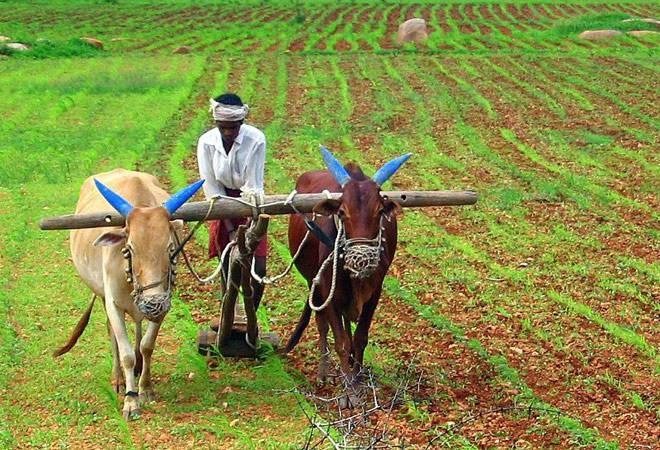Higher Need For Financial Assistance Among Farming Families: NABARD Survey

About eighty-seven per cent of the total agricultural households were small and marginal farmers (with land possession of less than and upto 2 hectares), according to a survey by National Bank of Agriculture and Rural Development (NABARD). The first all India rural financial inclusion survey 2016-17, conducted by NABARD revealed that 48 per cent of the rural families were agricultural households and the remaining belonged to non-agricultural families.
Despite such large sections of rural families were dependent on the agricultural sector, it was revealed that only 8.5 per cent of the agricultural households had been trained in the principal activity against 14.4 per cent members among the non-agricultural households who obtained training.
The survey, which was held in 2016, covered a sample of 1.88 lakh persons from 40,327 agricultural and non-agricultural rural families across 29 states of the country. Various financial inclusion aspects of the rural families in terms of borrowings, savings, investment, insurance, pension and remittances were included in the survey.
Incidence of Indebtedness
As per this survey, a household was considered as indebted if they had any outstanding loan on the date of the survey (in 2016). It has emerged that the incidence of indebtedness was higher among the agricultural households (52.5 per cent) as compared to the non-agricultural households (42.8 percent). This points out to a higher need for financial assistance for the agricultural households. Overall, 47.4 percent of the total rural households were found to be having some outstanding debt in 2016.
Telangana state, which recorded as high as nearly 4,000 farmers’ suicides in the last four years, had 79 percent of indebtedness, highest across states; followed by Andhra Pradesh (77 per cent), and Karnataka (74 per cent). The same was also considerably higher in the states like Arunachal Pradesh (69 per cent), Manipur (61 per cent), Tamil Nadu (60 per cent), Kerala (56 per cent), and Odisha (54 per cent) where more than half of the households were found to be indebted at the time of the survey.
Income
The average monthly income for the farmer households was Rs. 8,931 as per the survey, while that of the non- agricultural families was Rs. 7,269. However, a marked variation was noted among the states in this category. The average monthly income of the agricultural households in the states like Punjab was Rs. 23,133, followed by Haryana (Rs. 18,496) and Kerala (Rs. 16,927), which reported maximum levels of income. On the other hand, states like Andhra Pradesh, Jharkhand and Uttar Pradesh reported very low average monthly incomes of less than Rs. 7,000 per household indicating the dismal scenario of agriculture in these states.
The survey revealed that a majority of over 50 per cent of the farmer families had two sources of income, while close to 40 per cent had more than two sources to depend on for income. In contrast, a majority of about four-fifths of the non-agricultural families was found to have only one source of income.
Expenditure
The survey recorded the average monthly consumption expenditure of agricultural families and non-agricultural families as Rs. 7,152 and Rs. 6,187, respectively. That is, over all, the average monthly expenditure of rural families was Rs. 6,646.
Among the states, Punjab and Kerala stood at the top end of the hierarchy which recorded the highest monthly expenditure per family exceeding Rs. 11,000. On the other hand, the states - West Bengal, Uttar Pradesh, Odisha, Madhya Pradesh, Jharkhand, Chhattisgarh and Andhra Pradesh fared poorly with their monthly expenditure being lower than Rs. 6,000 per family. It is profoundly disenchanting that about 51 per cent of the total consumption expense among rural households had been made on food items, leaving the remaining 49 percent for non-food items.
Investment
The survey revealed the poor investment capabilities of India’s rural families. Only 10.4 percent of the agricultural families claimed to have made any investment during 2015-2016, while the non-agricultural rural families reported further lower levels of investment which was only 8.7 percent at the time of the survey. Overall, only 9.5 percent of the total rural families claimed to have invested in the last one year wherein the average annual investment amount stood at Rs. 60,529.
The survey also revealed that only about 26 percent of the agricultural households and 25 per cent of the non-agricultural households had been covered under one or the other type of insurance in 2016.
Get the latest reports & analysis with people's perspective on Protests, movements & deep analytical videos, discussions of the current affairs in your Telegram app. Subscribe to NewsClick's Telegram channel & get Real-Time updates on stories, as they get published on our website.























